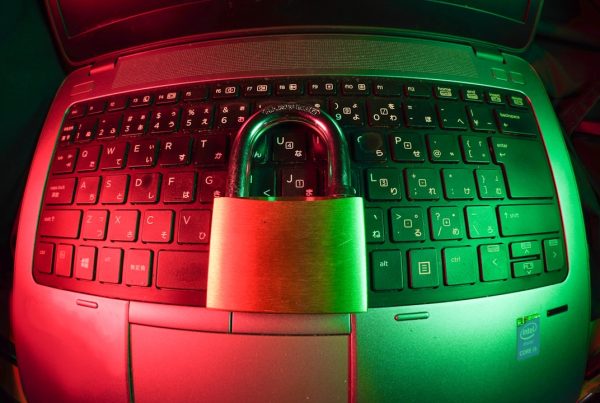Ransomware attacks have become a prevalent threat in today’s digital landscape, targeting individuals and organizations alike. You may have heard stories of businesses being brought to their knees after their data was encrypted by malicious actors demanding a ransom for its release. These attacks typically begin with a phishing email or a compromised website, where unsuspecting users inadvertently download malware.
Once the ransomware infiltrates your system, it encrypts files, rendering them inaccessible until a ransom is paid, often in cryptocurrency to maintain the anonymity of the attackers. Understanding the mechanics of these attacks is crucial for you to develop effective defenses. The impact of ransomware can be devastating, not only financially but also in terms of reputation and operational continuity.
If you find yourself in the crosshairs of such an attack, the consequences can extend beyond the immediate loss of data. You may face downtime that disrupts business operations, loss of customer trust, and potential legal ramifications if sensitive data is compromised. Recognizing the signs of a ransomware attack early can be your best defense.
This includes unusual system behavior, unexpected file extensions, or sudden demands for payment. By being aware of these indicators, you can take proactive steps to mitigate the risks associated with ransomware.
Key Takeaways
- Ransomware attacks are a growing threat to businesses and individuals, involving the encryption of data and a demand for payment in exchange for decryption.
- Strong security measures, such as firewalls, antivirus software, and regular security updates, are essential for preventing ransomware attacks.
- Regularly backing up data is crucial for mitigating the impact of a ransomware attack, as it allows for the restoration of data without paying the ransom.
- Educating employees on cyber security best practices, such as avoiding suspicious links and emails, can help prevent ransomware attacks from occurring.
- Utilizing advanced threat detection tools, such as intrusion detection systems and behavior-based analytics, can help identify and respond to ransomware attacks in real time.
Implementing Strong Security Measures
Fortify Your Network
Start by ensuring that your network is secured with strong firewalls and intrusion detection systems. These tools act as barriers against unauthorized access and can help identify suspicious activities before they escalate into full-blown attacks.
Segment and Isolate
Consider segmenting your network to limit the spread of ransomware if an infection occurs. By isolating critical systems and data, you can contain potential damage and maintain operational integrity. Additionally, use strong, unique passwords across all accounts and systems to prevent unauthorized access.
Multi-Factor Authentication and Ongoing Vigilance
Implementing multi-factor authentication (MFA) adds an extra layer of protection, making it significantly harder for attackers to breach your systems. Regularly review and update your security policies to ensure they remain effective against evolving threats. By staying vigilant and proactive in your approach to security, you can significantly reduce the likelihood of falling victim to a ransomware attack.
Regularly Backing Up Data

One of the most effective strategies you can employ against ransomware is regular data backups. By maintaining up-to-date copies of your critical files, you can minimize the impact of an attack should it occur. You should establish a routine backup schedule that includes daily or weekly backups, depending on how frequently your data changes.
It’s also wise to store these backups in multiple locations, such as on external hard drives and cloud storage solutions. This redundancy ensures that even if one backup is compromised, you still have access to your data. When backing up your data, it’s crucial to ensure that these backups are not directly connected to your main network.
Ransomware often seeks out connected drives to encrypt them as well, so keeping backups isolated can be a lifesaver. Regularly test your backup restoration process to confirm that you can recover your data quickly and efficiently when needed. By prioritizing data backups as part of your overall cybersecurity strategy, you can significantly reduce the pressure to pay a ransom and regain control over your information.
Educating Employees on Cyber Security Best Practices
| Metrics | Results |
|---|---|
| Number of Employees Trained | 500 |
| Training Completion Rate | 95% |
| Number of Reported Phishing Attempts | 10 |
| Number of Reported Security Incidents | 3 |
Your employees are often the first line of defense against cyber threats, making education on cybersecurity best practices essential. You should conduct regular training sessions that cover topics such as recognizing phishing attempts, safe browsing habits, and the importance of strong passwords. By fostering a culture of cybersecurity awareness within your organization, you empower your team to be vigilant and proactive in identifying potential threats.
In addition to formal training sessions, consider implementing ongoing awareness campaigns that keep cybersecurity at the forefront of employees’ minds. This could include sending out newsletters with tips on avoiding common pitfalls or sharing real-life examples of ransomware attacks and their consequences. Encourage open communication about cybersecurity concerns and create an environment where employees feel comfortable reporting suspicious activities without fear of repercussions.
By investing in employee education, you not only enhance your organization’s security posture but also cultivate a sense of shared responsibility for protecting sensitive information.
Utilizing Advanced Threat Detection Tools
In today’s rapidly evolving cyber threat landscape, relying solely on traditional security measures may not be enough. You should consider utilizing advanced threat detection tools that leverage artificial intelligence and machine learning to identify anomalies within your network. These tools can analyze vast amounts of data in real-time, allowing for quicker detection of potential ransomware attacks before they can cause significant damage.
Implementing endpoint detection and response (EDR) solutions can also enhance your ability to monitor and respond to threats effectively. EDR tools provide continuous monitoring and automated responses to suspicious activities on endpoints, such as workstations and servers. By integrating these advanced technologies into your cybersecurity strategy, you can stay one step ahead of cybercriminals and significantly reduce the risk of falling victim to ransomware attacks.
Creating a Response Plan for Ransomware Attacks

Having a well-defined response plan for ransomware attacks is crucial for minimizing damage and ensuring a swift recovery. You should develop a comprehensive incident response plan that outlines specific steps to take in the event of an attack. This plan should include identifying key personnel responsible for managing the response, establishing communication protocols, and detailing procedures for isolating affected systems.
Regularly testing and updating your response plan is equally important. Conduct tabletop exercises or simulations to evaluate how effectively your team can respond to a ransomware incident. This practice will help identify any gaps in your plan and allow you to make necessary adjustments before an actual attack occurs.
By being prepared with a robust response plan, you can mitigate the impact of ransomware attacks and restore normal operations more quickly.
Keeping Software and Systems Up to Date
Keeping your software and systems up to date is one of the simplest yet most effective ways to protect against ransomware attacks. Cybercriminals often exploit vulnerabilities in outdated software to gain access to systems, so regularly applying patches and updates is essential for maintaining security. You should establish a routine schedule for checking for updates across all software applications and operating systems used within your organization.
In addition to routine updates, consider implementing automated patch management solutions that streamline this process. These tools can help ensure that critical updates are applied promptly without requiring manual intervention. By prioritizing software updates as part of your cybersecurity strategy, you significantly reduce the risk of exploitation by ransomware attackers looking for easy targets.
Collaborating with Law Enforcement and Cyber Security Experts
Finally, collaborating with law enforcement agencies and cybersecurity experts can provide valuable support in combating ransomware threats. Establishing relationships with local law enforcement can facilitate quicker responses in the event of an attack and provide access to resources that may aid in recovery efforts. Additionally, cybersecurity experts can offer insights into emerging threats and best practices for protecting your organization.
Consider joining industry-specific groups or forums where you can share experiences and learn from others facing similar challenges. Engaging with these communities allows you to stay informed about the latest trends in cyber threats and defenses while fostering collaboration among peers. By leveraging external expertise and resources, you enhance your organization’s resilience against ransomware attacks and contribute to a broader effort in combating cybercrime.
In conclusion, understanding ransomware attacks and implementing comprehensive security measures are essential steps in safeguarding your organization from this growing threat. By regularly backing up data, educating employees on best practices, utilizing advanced detection tools, creating response plans, keeping software updated, and collaborating with experts, you can significantly reduce the risk of falling victim to ransomware attacks while ensuring a swift recovery if an incident occurs. Your proactive approach will not only protect your organization but also contribute to a safer digital environment for everyone.
Ransomware attacks have become a major concern in the field of cybersecurity, with hackers targeting individuals and organizations alike. One related article that delves into the topic further can be found on cybersecuritydecoder.com. This article discusses the impact of ransomware on critical infrastructure security and provides insights on how to protect against such attacks. It is crucial for individuals and businesses to stay informed about the latest trends in cybersecurity to safeguard their data and systems from potential threats.
FAQs
What is ransomware in cyber security?
Ransomware is a type of malicious software designed to block access to a computer system or files until a sum of money is paid. It is a form of cyber extortion and can cause significant damage to individuals and organizations.
How does ransomware infect a computer system?
Ransomware can infect a computer system through various means, including phishing emails, malicious websites, and software vulnerabilities. Once the ransomware is executed, it can quickly spread throughout the network and encrypt files, rendering them inaccessible.
What are the potential impacts of a ransomware attack?
The impacts of a ransomware attack can be severe, including financial loss, data loss, and reputational damage. It can also disrupt business operations and lead to legal and regulatory consequences.
How can organizations protect themselves from ransomware attacks?
Organizations can protect themselves from ransomware attacks by implementing strong cybersecurity measures, such as regular software updates, employee training on phishing awareness, and the use of antivirus and anti-malware software. It is also important to regularly back up data and have a response plan in place.
What should individuals do if they are targeted by ransomware?
If individuals are targeted by ransomware, they should immediately disconnect the infected device from the network to prevent further spread. They should also report the incident to law enforcement and seek assistance from cybersecurity professionals. It is important not to pay the ransom, as there is no guarantee that access to the files will be restored.



